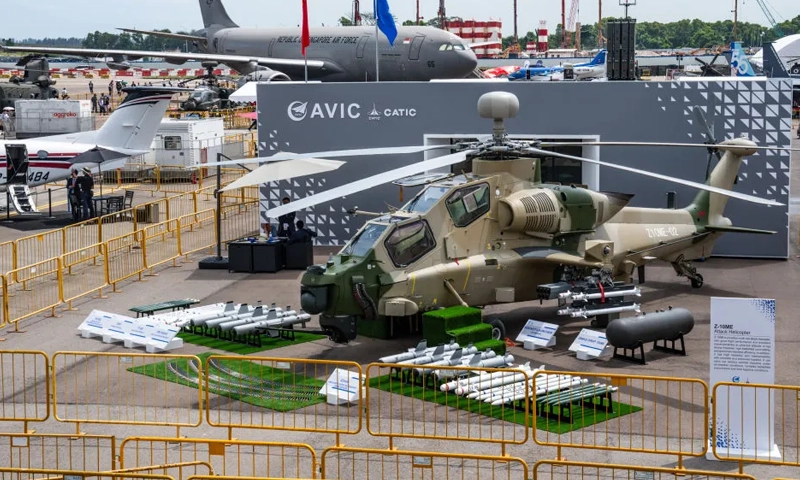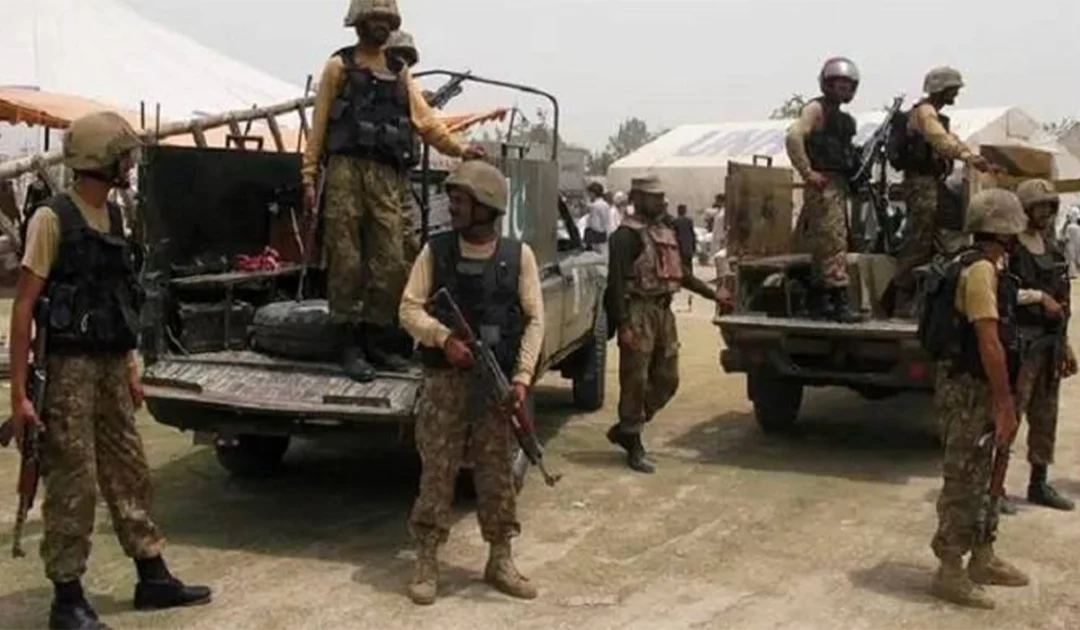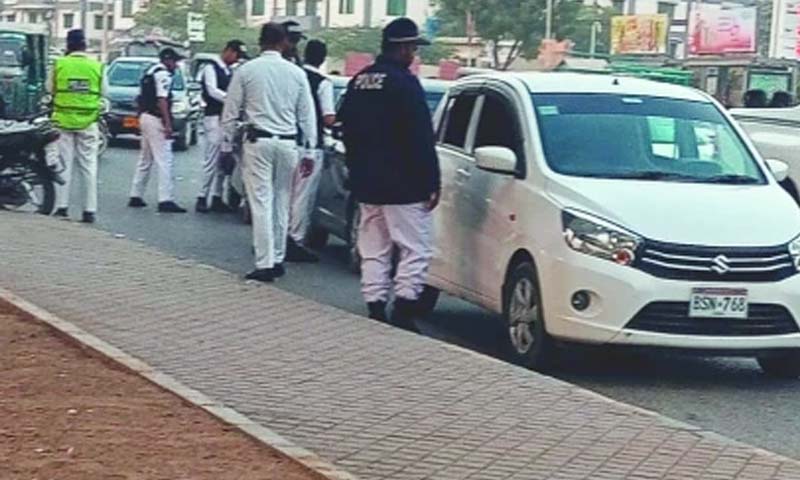- Web Desk
- 7 Hours ago
What makes Pakistan’s new Z-10ME attack helicopter a game changer?
-

- Web Desk
- Aug 09, 2025

ISLAMABAD: Last week, Pakistan’s military public relations wing, ISPR, announced the induction of Chinese-made Z-10ME attack helicopters into the Pakistan Army Aviation Corps. This marked the apparent success of a decade-long effort to replace ageing Bell AH-1F/S Cobra helicopters with modern aircraft.
Following China’s sale of the Z-10ME attack helicopter to Pakistan, Chinese state media outlet Global Times quoted Ministry of Defence spokesperson Jiang Bin as saying that China would continue to share its development achievements with friendlya countries.
He stressed that “the defence and military cooperation between China and Pakistan is not aimed at any third party, and we are committed to maintaining international and regional security and stability.”
Experts say this state-of-the-art helicopter, equipped with advanced technology, can accurately engage targets at any time of day or night and in all weather conditions. Outfitted with advanced radar and cutting-edge electronic warfare systems, the Z-10ME significantly enhances the army’s ability to respond swiftly and effectively to both aerial and ground threats.
The induction ceremony was presided over by Field Marshal and Chief of Army Staff General Asim Munir. According to ISPR, during his visit to Multan Garrison on August 2, Gen Munir witnessed a live demonstration of the Z-10ME’s firepower at the Muzaffargarh Field Firing Ranges.
The development came shortly after the first batch of three US-made Apache attack helicopters arrived at India’s Hindon Airbase near Delhi — the country’s first major purchase of American-made attack helicopters.
What are the key features of the Chinese Z-10ME attack helicopter? What weapons does it carry, and why did Pakistan choose it? Defence experts also weighed in on how they view the Z-10ME compared to the US-made Apache.
Features of the Z-10ME
Air Commodore (retd) Muzammil Jibran, formerly of the Pakistan Air Force’s GD (P) branch and now teaching at Air University Multan, told the BBC Urdu that the Z-10 — also known as the WZ-10 — began development in 1994 when China identified the need for a modern attack helicopter. It is China’s first domestically developed attack helicopter, built by the Changhe Aircraft Industries Corporation.
The Z-10’s maiden test flight took place in 2003. Although it has been in PLA service since 2009, it was officially inducted in 2012.
According to Asian Military Review, the helicopter was “developed to meet the demands of the modern battlefield, offering an effective combination of close air support, anti-tank missions, and limited air-to-air combat capabilities — placing it in the same key tactical class as India’s AH-64E Apache Guardians.”
Over the years, successive variants have seen upgrades, including a modern millimetre-wave fire-control radar, extended range, and the ability to carry heavier missile loads, he said.
One standout feature, Jibran said, is its radar’s ability to perform effectively even in fog — a limitation of most radars. Its cannons are integrated with helmet-mounted sights, meaning the guns automatically align with the pilot’s line of sight.
The latest model features a more powerful engine, boosting performance and range.
According to Defence Security Asia, the export version still uses two robust WZ-9C turboshaft engines, each producing about 1,200 kW (around 1,600 horsepower), optimised for high-altitude environments such as Siachen or the Karakoram Range.
The Z-10ME has a top speed of about 300 km/h and an effective range of 800–1,120 km (depending on payload and extra fuel). Its empty weight is about 5,100 kg, with a maximum take-off weight of 7,200 kg — making it capable of extended operations along the line of control or deep-strike missions.
Jibran added that Chinese weapons are now gaining recognition globally: “No country compromises on its defence needs.”
According to defence analyst Chaudhry Farooq, the helicopter can carry up to 16 anti-tank guided missiles (HJ-10 or AKD-10), 32-tube rocket pods, and TY-90 air-to-air missiles — enabling it to strike ground targets and provide aerial defence.
This deal is seen as a new chapter in Sino-Pakistan military cooperation and could pave the way for the future purchase of heavier, more advanced Chinese attack helicopters, first unveiled in March 2024.
How Pakistan Chose the Z-10ME
Pakistan initially planned to replace its AH-1F helicopters with US-made AH-1Z Vipers. Although Washington approved the deal in 2015, it later withdrew — reportedly due to growing defence ties with India.
A senior Army Aviation pilot, speaking to the BBC on condition of anonymity, said maintenance is a critical factor in attack helicopters.
“The Apache is an entirely different machine that requires a completely new infrastructure. Pakistan had already integrated all weapons and technology onto the American H-1Z Viper, but those helicopters were never delivered.”
Pakistan then turned to Turkey’s T129 ATAK helicopters, but engine supply issues ended that option as well — leading Pakistan back to China.
Chinese helicopters offered in 2015 were initially rejected on technical grounds, but by 2019, Pakistan had finalised the deal. The Z-10ME was modified to meet Pakistani needs with Apache-style radar, air-to-air and air-to-surface missiles, and other advanced weapons systems.
Alex Plitsas, Senior Fellow at the Atlantic Council and former Pentagon official, said that the Z-10 was not Pakistan’s first choice.
“Pakistan wanted Turkish-built helicopters, but the US blocked export of engine parts. That underscored how unreliable dependence on the US or the West could be. This gave Pakistan another reason to deepen defence cooperation with China.”
Chinese military expert Zhang Zhiwei told Global Times that compared to the baseline Z-10, the Z-10ME includes added armour plates, warning sensors, and jamming systems to improve survivability.
Z-10ME Designed Specifically for Pakistan’s Needs’
Chaudhry Farooq noted that the Z-10ME was developed in line with Pakistan Army’s feedback and operational requirements.
The latest version features a new engine and additional armour around crew seating. It also includes an advanced “self-protection suite” integrated with the helicopter’s electronic warfare systems, enhancing defence against enemy attacks, he said.
Previously, the Z-10 had only a Radar Warning Receiver (RWR), but now it also has Laser Warning Receivers (LWR) and missile warning systems — all AI-integrated for automated defensive responses. “If an enemy locks onto you or fires a missile, the system activates automatically and provides the pilot with countermeasures,” Jibran explained.
Z-10ME vs the US Apache
Jibran pointed out several innovations in the Z-10ME compared to the Apache. The Chinese helicopter’s engine exhausts are angled 45 degrees to the rear instead of horizontal, significantly reducing its heat signature. This makes it harder for enemy radar or heat sensors to detect, allowing pre-emptive action.
The Apache, however, has a long combat record in wars and conflicts, whereas the Z-10ME has not yet been tested in combat — with Pakistan as its first buyer.
Plitsas observed that the Z-10 is lighter, slightly smaller, and has greater range, giving it more agility. The Apache, though, is faster, has a wider weapons range, and features more advanced radar and targeting systems. The Z-10 is much cheaper, but both helicopters are designed primarily for anti-tank missions.




